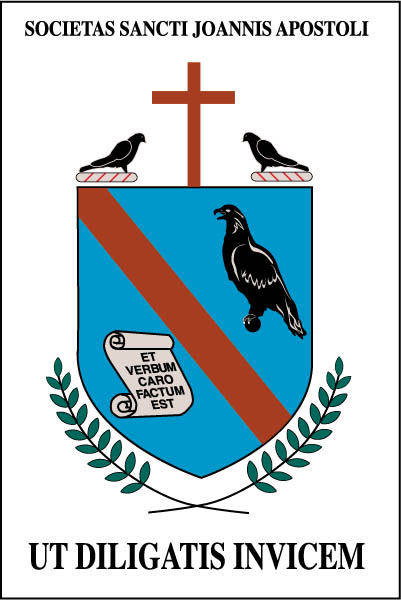
The Society of St. John the Apostle was founded in 1992 by two concerned traditional Catholic priests to advance exclusively the Traditional Latin Mass, Divine Office, and Sacred Chant of the Roman Catholic Church that were almost universally used before the changes that followed the Second Vatican Council. The focus of the Society's work is the oratory, a place designed, after the tradition of St. Philip Neri and John Henry Cardinal Newman, for divine worship.
The Society adheres to the Roman Catholic Faith, as handed down in Sacred Scripture, Sacred Tradition, and the nearly 2000-year Magisterium of the Church. The Society accepts the doctrine on the office of the papacy as dogmatically defined at the First Vatican Council. The Society accepts the truths, doctrines, practices, and traditions of Roman Catholicism, as traditionally understood, and necessarily rejects all that does not conform to these criteria. Perforce, the Society operates as a traditional Catholic society, independently of any diocese or other religious society.
We strive to save our souls in the way Roman Catholics have always done: through the Traditional Latin Mass, the Mass of Apostolic Tradition, canonized for all time by the Council of Trent; through the Traditional Latin Sacraments; and through the pious practices which for generations have nourished sanctity and forged saints.
The Society has taken as its patron St. John the Apostle, the son of Zebedee and the brother of the Apostle James the Greater. He was called to be an Apostle by Our Lord in the first year of His public ministry. He became the "beloved disciple" and the only one of the Twelve who did not forsake the Savior in the hour of His Passion. He stood faithfully at the cross when the Savior made him the guardian of His Blessed Mother.
His later life was passed chiefly in Jerusalem and at Ephesus. He founded many churches in Asia Minor. He wrote the fourth Gospel, three Epistles, and the Apocalypse (Revelation). Tradition relates that he was brought to Rome, and there, by order of the Emperor Domitian, cast into a cauldron of boiling oil, but came forth unhurt and was banished to the island of Patmos for a year. He lived to an extreme old age, surviving all his fellow Apostles, and died at Ephesus about the year 100.
Name. Above the arms appears the Society's official Latin name, imprinted on somewhat florid ribbons: Societas Sancti Joannis Apostoli [Society of St. John the Apostle].
The Escutcheon. The blue tincture of the background represents the truth and fidelity to the traditional Roman Catholic Faith to which the Society has committed itself. The dexter (left side facing the viewer) contains a scroll with St. John's description of the Incarnation: Et verbum caro factum est [And the word was made flesh] (1:14/DR). The sinister (right side) contains an eagle, the traditional representation of St. John (Apocalypse 4:7), whose Gospel soars above the heights, directed toward the contemplation of the divine. The bend (left-to-right diagonal division) uses a tawny (orange-red, or bronze) tincture, representing a worthy ambition.
Adornments. Above the crest is a Latin cross in tawny tincture, representing that the Society operates under the protection and care of Christ. The cross is bounded on dexter and sinister by facing doves, representing peace and charity, atop Roman fasces, representing the discipline of the Roman rite, to which the Society adheres, and containing strokes of the red tincture of fortitude. Below the crest on dexter and sinister are olive branches, in the green tincture of hope, representing the spiritual peace produced by adherence to the true Faith.
Motto. Below the arms appears the Society's motto, properly imprinted on somewhat florid ribbons, taken from St. John's Gospel (13:34/DR) relaying the divine commandment, Ut diligatis invicem [That you love one another].